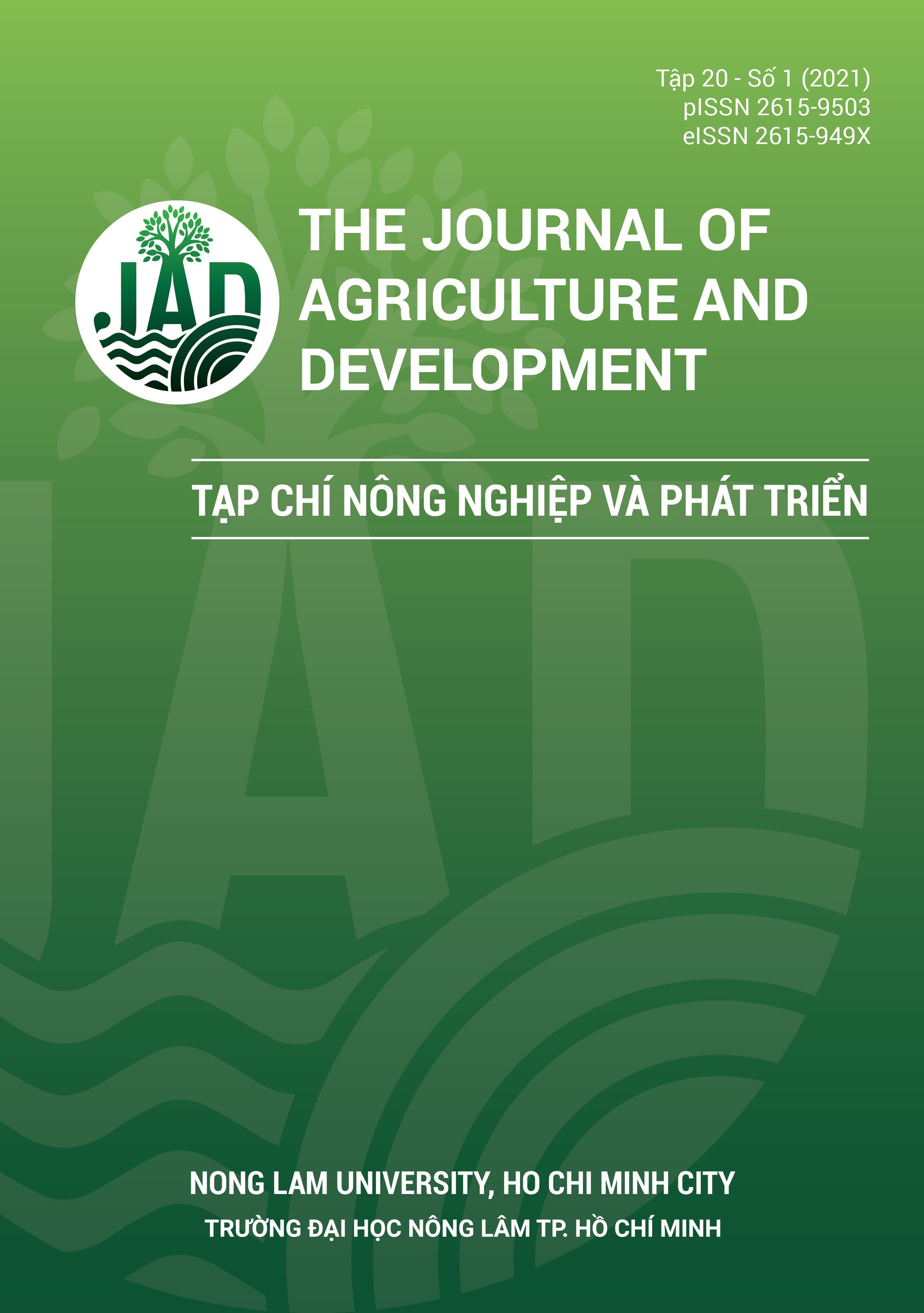Efficacy of fluralaner in drinking water in controlling mite and improving welfare in laying hens
Main Article Content
Abstract
The objective of the experiment was to evaluate the effectiveness of Exzolt (contaning fluralaner) to control mite and improve behavior relating to welfare in layers. Monitoring and recording indicators of livestock productivity, level of mite infection, number of eggs with red dots, and behavior of hens before and after using Exzolt were performed. 4 cameras to monitor hens’ behavior from 18 pm of the previous night to 6 am of the following morning were installed to record the layer’s behavioral indicators caused by the mite including number of shakes, wing flaps, scratches, preening, bites, pecking (aggressive), before and after using Exzolt. As a result, the studied farm was heavily infected with mites with an average infection level of 1.79 on a scale of 0 - 2. After the treatment with Exzolt, the farm became totally free of the mites in layers for many weeks thereafter. The use of Exzolt did not affect daily feed intake, mortality. The proportion of eggs with red spots decreased significantly. Especially, the layer’s behavioral expression causing annoying was significantly reduced after using Exzolt. This is the reason for good recommendation to use this product to control mite for layer farm.
Article Details
References
Abdigoudarzi, M., Mirafzali, M. S., & Belgheiszadeh, H. (2013). Human infestation with Dermanyssus gallinae (Acari: Dermanyssidae) in a family referred with pruritus and skin lesions. Journal of Arthropod Borne Diseases 8(1), 119-123.
Chauve, C. (1998). The poultry red mite Dermanyssus gallinae (De Geer, 1778): Current situation andfuture prospective for control. Veterinary Parasitology 79(3), 239-245. https://doi.org/10.1016/S0304-4017(98)00167-8
George, D. R., Finn, R. D., Graham, K. M., Mul, M. F., Maurer, V., Moro, C. V., & Sparagano, O. A. E. (2015). Should the poultry red mite Dermanyssus gallinae be of wider concern for veterinary and medical science? Parasites & Vectors 8, 178. https://doi.org/10.1186/s13071-015-0768-7
Hinkle, N. C., Jirjis, F., Szewczyk, E., Sun, F., & Flochlay-Sigognault, A. (2018). Efficacy and safety assessment of a water-soluble formulation of fluralaner for treatment of natural Ornithonyssus sylviarum infestations in laying hens. Parasites & Vectors 11, 99. https://doi.org/10.1186/s13071-018-2678-y
Lima-Barbero, J. F., Villar, M., Hofle, U., & de la Fuente, J. (2020). Challenges for the control of poultry red mite (Dermanyssus gallinae). In Bastidas Pacheco, G. A. (Ed.). Parasitology and Microbiology Research. London, UK: IntechOpen. https://doi.org/10.5772/intechopen.90439
Mentz, M. B., Silva, G. L., & Silva, C. E. (2015). Dermatitis caused by the tropical fowl mite Ornithonyssus bursa (Berlese) (Acari: Macronyssidae): a case report in humans. Revista da Sociedade Brasileira de Medicina Tropical 48(6), 786-788.
Pham, S. L., Nguyen, B. H., Tran X. H., Nguyen, H. H.,Huynh, T. M. L., Le, N. M., Pham, Q. T., Pham, N.T., Do, N. T., & Nguyen, V. T. (2011). Poultry disease in Vietnam. Ha Noi, Vietnam: Agricultural Publishing House.
Stringham, M., & Watson, W. (2003). Fowl mite management in breeders. The Proceedings of the 2003 Broiler Breeder and Hatchery Management Conference (8). Statesville, North Carolina: North Carolina State University Cooperative Extension Service.
Thomas, E, Temple, D., & Petersen, I. (2019). Effect of fluralaner on behavioural stress indicators in laying hens infested with Dermanyssus gallinae. The 4th International Symposium on Parasite Infections in Poultry (36-37). Vienna, Austria: World Veterinary Poultry Association.
Thomas, E., Zoller, H., Liebisch, G., Alves, L. F. A., Vettorato,. L., Chiummo, R. M., & Sigognault-Flochlay, A. (2018). In vitro activity of fluralaner and commonly used acaricides against Dermanyssus gallinae isolates from Europe and Brazil. Parasites Vectors 11, 361. https://doi.org/10.1186/s13071-018-2956-8








